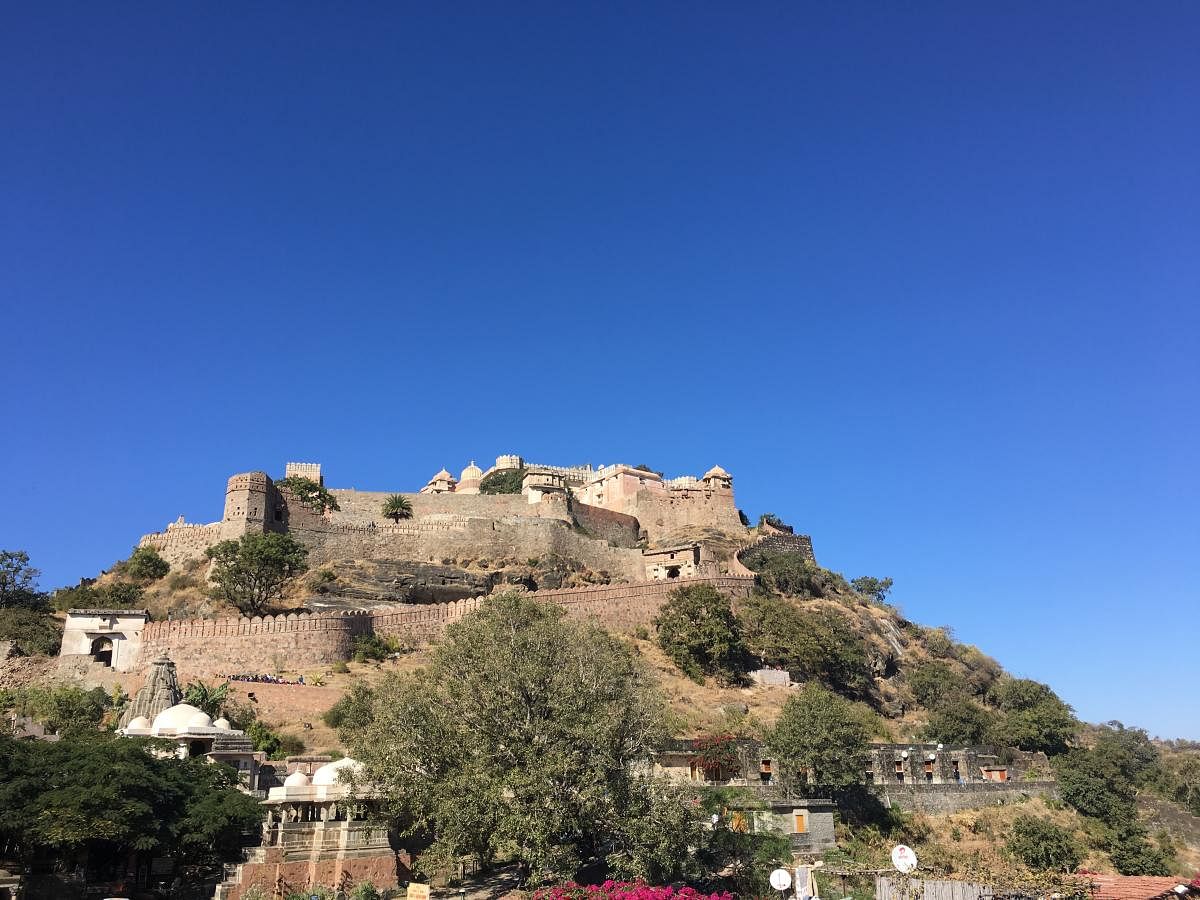
The road that takes us from Jaipur to Kumbhalgarh through Pushkar, throws plenty of surprises around every bend. Rajasthan — the desert state of India, known for its palaces and sand dunes, has another breathtaking landscape as you travel towards the Aravalli ranges. The lush green fields and lakes that we see in late December is a pleasant delight for first-time tourists like us in Rajasthan.
Our heads are still buzzing from the hustle and bustle of Jaipur, the whirlwind trips around the city, the drive to Amer Fort and the jostling crowds up there at the fort. So the quiet and peaceful hinterlands of the state are a welcome respite. Grasslands and shrubs stretch away till the horizon as our driver takes us to Kumbhalgarh. He seems annoyed that we have booked ourselves into a resort there for two days with nothing to do. We must be the outliers among the tonnes of tourists he has ferried across the state. Looking out for the forest and wildlife from my window, as dusk settles in and we accomplish this six-hour ride, the words of a local I met at a jeweller’s shop in Jaipur resonates: “I am from Kumbhalgarh. It is beautiful, but make sure you pass the forests before sunset.” The forest is probably thick bushes. Coming from the Western Ghats in the south, this eco-system hardly qualifies for a forest!
No connectivity
The setting sun creates magical vistas along with the landscape and we feel transported into another time and era, as the car rounds up the Lakhela Talao, which is a sprawling lake around which numerous resorts have cropped up. Our resort is positioned further up the edge of the lake and after we check-in, we note the driver’s trepidation. He is virtually isolated with no cellular network and no shops around for the next two days. Well, this is what we needed, and after calling family back home with the landline number of the hotel’s reception, we get used to not checking our phones constantly and start observing the surroundings.
There is a big group of German tourists having dinner that night and arrangements have been made by the resort staff to have a Rajasthani dancer perform. Under the moonlight, right beside the lake, lined with the hills, the lilting melodies of the singers and the swaying dancers’ movements are food for the soul. The next morning, our driver urges us to see the Kumbhalgarh Fort nearby.
Frankly, we do not feel like venturing out of this cocoon and getting assailed by crowds of tourists at the fort.
However, he gives us an option, either to head up to the fort now or in the evening for the sound and light show, which he says is usually a big draw for tourists.
We grab the chance to head out in the morning to clear blue skies and a pleasant winter sun. The road leading up to the fort is narrow, barely enough for one car to pass, and with not many tourists making their way up, we reach in good time. What strikes us as we climb up is the sheer majesty of this fort.
I have seen forts in Maharashtra but nothing prepares me for this fort and its dominance throughout the region.
Massive doorway
‘Pol’ is a word that you will find across Rajasthan, written across entrances — which means doorway or gate. This fort was built by the Rajput ruler of the Mewar region, Rana Kumbha, between AD 1443 and 1458 under the supervision of the famous architect Mandan. The fort was constructed on the site of an older castle which is ascribed to Samprati, a Jain prince of the second century BC, according to the Archaeological Survey of India inscription at the site.
Speaking of ‘Pol’, there is a doorway on the east of this massive fort connecting the Mewar region to the Marwar region from this 15 km circuitous fort.
Maharana Pratap, the famed ruler of this region, was born here. There are large windows atop the palaces in the fort that give undulating views of the panoramic sights. It is no wonder that rulers built such massive forts to not only keep an eye out for the enemy but to also mark their territories.
The Maharajas must have stood at these windows with a swelling feeling of pride and a sense of accomplishment, looking down at their empire from this mighty perch. We go through the same gamut of emotions — marvelling at the mystery of this fort, which was never conquered in a battle.
Time stands still at such historical monuments.